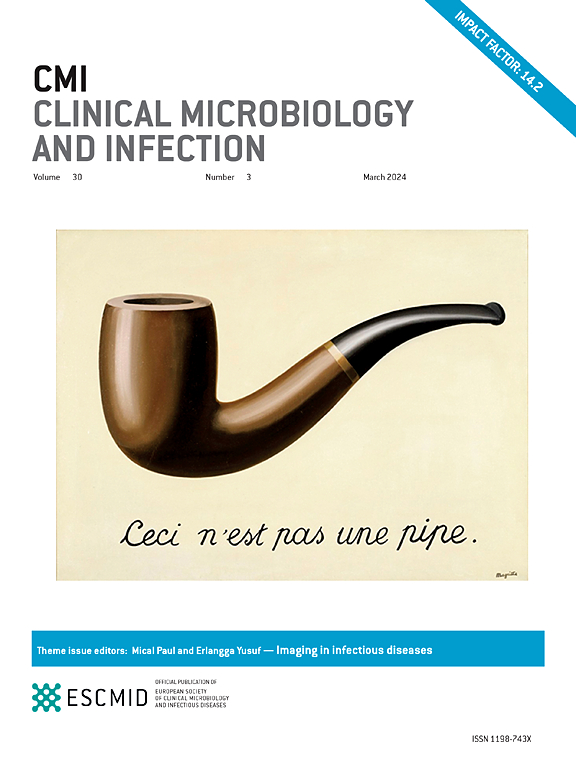Therapeutic drug monitoring of antibiotics for methicillin-resistant Staphylococcus aureus infections: an updated narrative review for clinicians
IF 10.9
1区 医学
Q1 INFECTIOUS DISEASES
引用次数: 0
Abstract
Background
Infections caused by methicillin-resistant Staphylococcus aureus (MRSA) are associated with high mortality rates. Optimal antibiotic dosage plays a crucial role in reducing MRSA burden; thus, the use of therapeutic drug monitoring (TDM) in the clinical practice, especially of new drugs such as ceftobiprole, ceftaroline, dalbavancin, and oritavancin, should be implemented.
Objectives
We aim to examine and summarize the available evidence about TDM of anti-MRSA molecules, with a focus on pneumonia, endocarditis and vascular infections, and bone and joint infections.
Sources
We applied ‘therapeutic drug monitoring’ and ‘Staphylococcus aureus’ as search terms in PubMed, considering a time frame of 24 years (2001–2024). Articles in English language, non-duplicated, evaluating antibiotic therapeutic target, and role of TDM were included in the study.
Content
In this review, available data for therapeutic target and TDM were critically analysed and summarized and suggestions about the use of old and new anti-MRSA antibiotics were provided, focusing on optimal dosages, tissue penetration according to infection types, and toxicity. Limitations to the widespread use of TDM in clinical practice were discussed.
Implications
The use of TDM may play an important role for the optimal management of patients with MRSA infections and may impact on patient outcomes by increasing efficacy and reducing the risk of adverse events. TDM may be implemented in clinical practice; however, several limitations such as the wide variability in the methodology and the need for skilled personnel need to be considered.
耐甲氧西林金黄色葡萄球菌感染抗生素的治疗药物监测:供临床医生参考的最新叙述性综述。
背景:耐甲氧西林金黄色葡萄球菌(MRSA)引起的感染死亡率很高。最佳抗生素剂量在减少 MRSA 负担方面起着至关重要的作用;因此,应在临床实践中使用治疗药物监测(TDM),尤其是头孢比普洛尔、头孢他啶、达巴万星和奥利他万星等新药:我们旨在研究和总结有关抗 MRSA 分子 TDM 的现有证据,重点关注肺炎、心内膜炎和血管感染以及骨和关节感染:我们在 PubMed 中使用 "治疗药物监测 "和 "金黄色葡萄球菌 "作为检索词,时间跨度为 24 年(2001-2024 年)。研究纳入了评估抗生素治疗目标和治疗药物监测作用的英文文章,文章不重复:在这篇综述中,对治疗目标和TDM的现有数据进行了批判性分析和总结,并就新旧抗MRSA抗生素的使用提出了建议,重点关注最佳剂量、根据感染类型进行组织穿透以及毒性。讨论了在临床实践中广泛使用 TDM 的局限性:影响:TDM 的使用可能对 MRSA 感染患者的优化管理起到重要作用,并可能通过提高疗效和降低不良反应风险来改善患者的预后。TDM可在临床实践中实施,但需要考虑到一些局限性,如方法的差异较大和需要熟练人员。
本文章由计算机程序翻译,如有差异,请以英文原文为准。
求助全文
约1分钟内获得全文
求助全文
来源期刊
CiteScore
25.30
自引率
2.10%
发文量
441
审稿时长
2-4 weeks
期刊介绍:
Clinical Microbiology and Infection (CMI) is a monthly journal published by the European Society of Clinical Microbiology and Infectious Diseases. It focuses on peer-reviewed papers covering basic and applied research in microbiology, infectious diseases, virology, parasitology, immunology, and epidemiology as they relate to therapy and diagnostics.

 求助内容:
求助内容: 应助结果提醒方式:
应助结果提醒方式:


